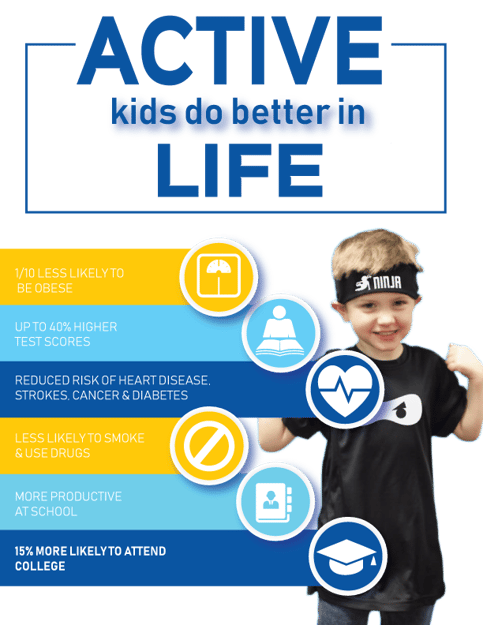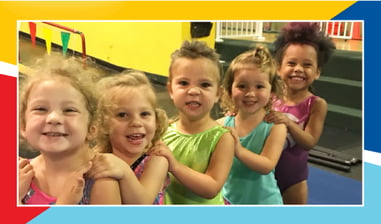Active Kids do better in life
Anyone who's seen kids on a playground knows that most are naturally physically active and love to move around. But what might not be apparent is that climbing to the top of a slide or swinging from the monkey bars can help lead kids to a lifetime of being active all the way into adulthood.
When kids are active, their bodies can do the things they want and need them to do. Why? Because regular exercise provides many benefits physically and in life. Physically active kids also are more likely to be motivated, focused, and successful in school. Mastering physical skills builds confidence at every age.

What Motivates Kids?
So there's a lot to gain from regular physical activity, but how do you encourage kids to do it? The three keys are:
- Choosing the right activities for a child's age: If you don't, the child may be bored or frustrated.
- Giving kids plenty of opportunity to be active: Kids need parents to make activity easy by providing equipment, signing them up for classes or sports teams, and taking them to playgrounds and other active spots.
- Keeping the focus on fun: Kids won't do something they don't enjoy.
When kids enjoy an activity, they want to do more of it. Practicing a skill — whether it's swimming or riding a tricycle — improves their abilities and helps them feel accomplished, especially when the effort is noticed and praised. These good feelings often make kids want to continue the activity and even try others.
Age-Appropriate Activities
The best way for kids to get physical activity is by incorporating physical activity into their daily routine. Toddlers and Preschoolers play actively several times a day. Children 6 to 17 years should do 60 minutes or more physical activity daily. This can include free play at home, active time at school, and participation in classes or organized sports at facilities like World Elite Kids.
Age-Based Advice:

Preschoolers: Preschoolers need play and exercise that helps them continue to develop important motor skills — kicking or throwing a ball, playing tag or follow the leader, hopping on one foot, riding a trike or bike with training wheels, or running obstacle courses.
School-age: With school-age kids spending more time in front of screens, the challenge for parents is to help them find physical activities they enjoy and feel successful doing. These can range from traditional sports like baseball and basketball to Tumbling, Ninja Zone, Gymnastics and more!
As kids learn basic skills and simple rules in the early school-age years, there might only be a few athletic standouts. As kids get older, differences in ability and personality become more apparent. Commitment and interest level often go along with ability, which is why it's important to find an activity that's right for your child.
Teens: Teens have many choices when it comes to being active — from school sports to after-school interests, such as yoga, skateboarding or more competitive sports like gymnastics and cheerleading. It's a good idea to have an exercise plan since it often has to be sandwiched between school and other commitments.

Be active yourself and support your kids' interests. If you start this early enough, they'll come to regard activity as a normal and fun part of your family's everyday routine.

STAY CONNECTED

